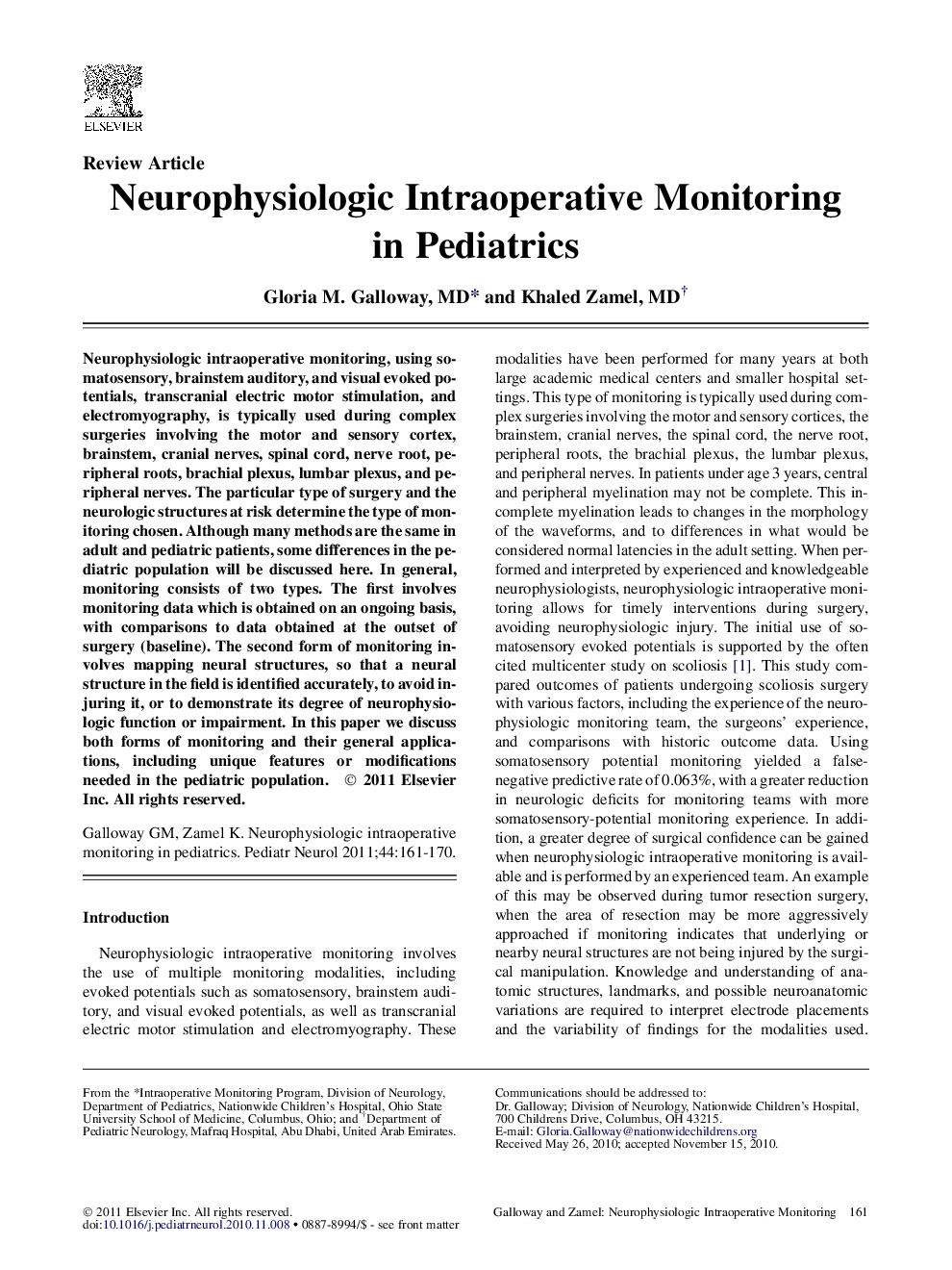| کد مقاله | کد نشریه | سال انتشار | مقاله انگلیسی | نسخه تمام متن |
|---|---|---|---|---|
| 3085757 | 1189831 | 2011 | 10 صفحه PDF | دانلود رایگان |

Neurophysiologic intraoperative monitoring, using somatosensory, brainstem auditory, and visual evoked potentials, transcranial electric motor stimulation, and electromyography, is typically used during complex surgeries involving the motor and sensory cortex, brainstem, cranial nerves, spinal cord, nerve root, peripheral roots, brachial plexus, lumbar plexus, and peripheral nerves. The particular type of surgery and the neurologic structures at risk determine the type of monitoring chosen. Although many methods are the same in adult and pediatric patients, some differences in the pediatric population will be discussed here. In general, monitoring consists of two types. The first involves monitoring data which is obtained on an ongoing basis, with comparisons to data obtained at the outset of surgery (baseline). The second form of monitoring involves mapping neural structures, so that a neural structure in the field is identified accurately, to avoid injuring it, or to demonstrate its degree of neurophysiologic function or impairment. In this paper we discuss both forms of monitoring and their general applications, including unique features or modifications needed in the pediatric population.
Journal: Pediatric Neurology - Volume 44, Issue 3, March 2011, Pages 161–170